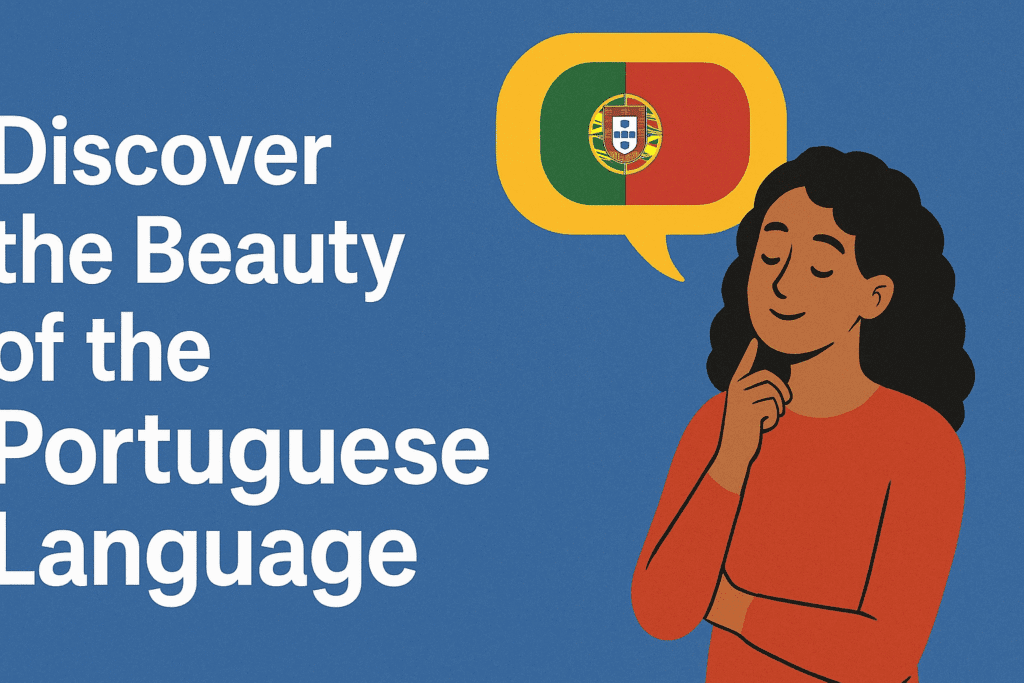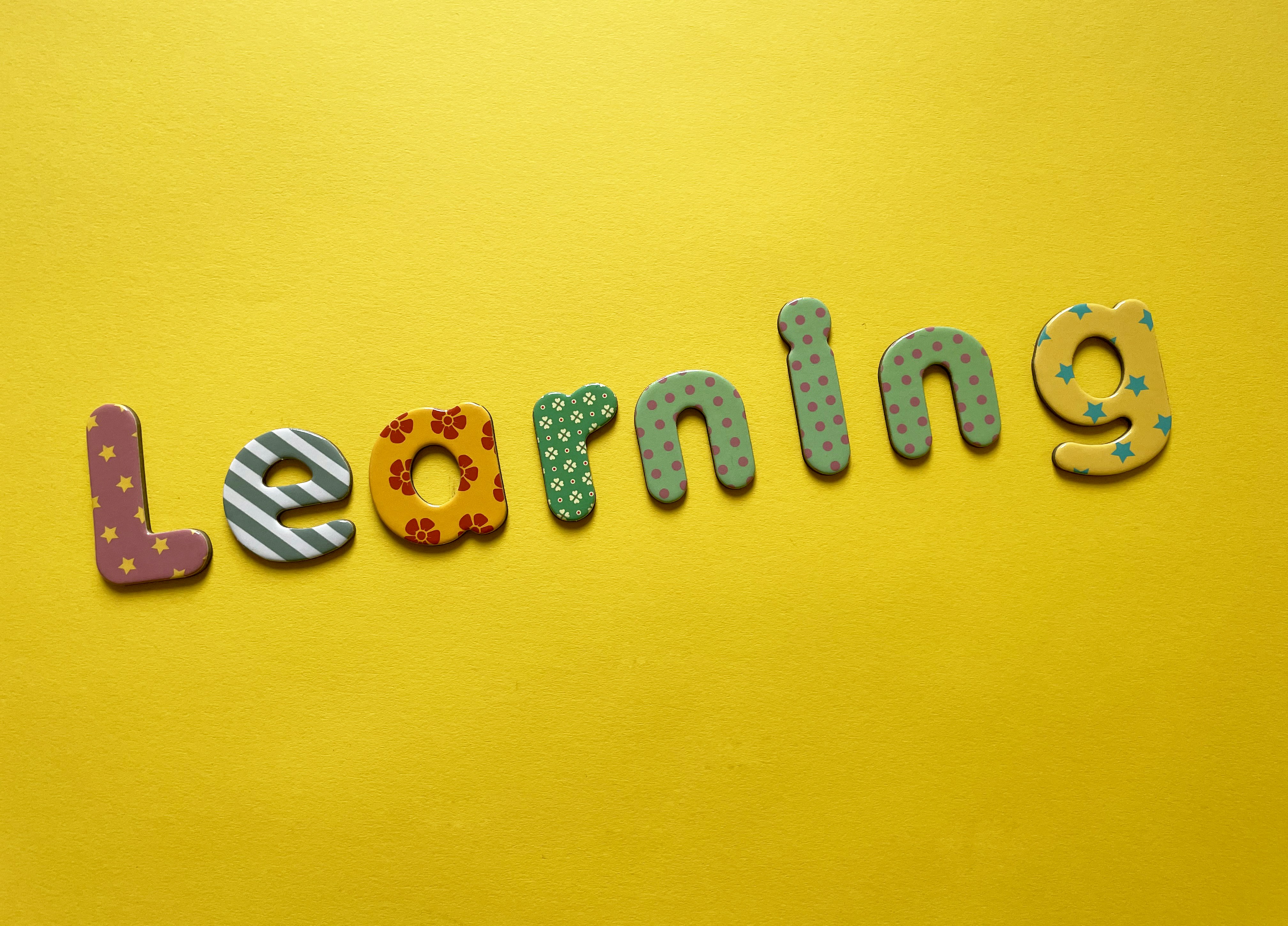Definite and Indefinite Articles: Master Portuguese

What are articles and their function in the Portuguese language? Definite and Indefinite Articles are essential word classes in the Portuguese language, preceding nouns to determine or make their reference indeterminate. They agree in gender (masculine/feminine) and number (singular/plural) with the noun they refer to, playing a crucial role in the clarity and precision of communication. Understanding the function of articles is fundamental for anyone wishing to master Portuguese, whether for formal writing, everyday conversation, or proficiency exams. They help us identify whether we are talking about something specific or something generic, directly impacting the meaning of sentences. There are two main categories: definite articles and indefinite articles, each with its own rules and contexts of use. In this comprehensive guide, we will explore each type of article in depth, providing practical examples and valuable tips so that you can use them confidently and correctly. Understanding the distinction between a definite and an indefinite article is a giant step towards fluency and grammatical accuracy. Definite Articles: Usage, Examples, and Essential Rules Definite articles are used to indicate a specific noun, known to both the speaker and the listener. In Portuguese, they are: o, a, os, as. Their main function is to particularize the noun, making it unique in that context. For example, when saying “o livro” (the book), we are referring to a specific book that has already been mentioned or that is common knowledge. Agreement is a golden rule: the definite article must always agree in gender and number with the noun. If the noun is feminine singular, the article will be “a”; if it is masculine plural, it will be “os”. Let’s look at some clear examples: O carro (masculine singular) A casa (feminine singular) Os meninos (masculine plural) As meninas (plural feminine) The main contractions are: De + o/a/os/as = do, da, dos, das (Ex: Maria’s book) Em + o/a/os/as = no, na, nos, nas (Ex: He is in the office) Por + o/a/os/as = pelo, pela, pelos, pelas (Ex: We passed through the square) A + a/as = à, às (contraction occurs when the preposition ‘a’ is joined with the article ‘a’ or ‘as’. Ex: I’m going to the beach) For example, “I bought a cake. The cake was delicious.” This usage is crucial for textual cohesion and to avoid ambiguities. In some contexts, definite articles are mandatory, such as before superlatives (“The most beautiful flower”) and before names of languages when used as nouns (“Portuguese is complex”). However, there are exceptions, for example, when the language is the direct object of verbs like ‘to speak’ or ‘to learn’ without specificity (“I speak Portuguese fluently“). Mastering definite articles requires practice and attention to the nuances of language. Indefinite Articles: When and How to Use Them Correctly Unlike definite articles, indefinite articles are used to refer to a noun in a generic, imprecise way, or when it is introduced for the first time in discourse. They indicate that the noun is any example of its kind, not a specific one. In Portuguese, the indefinite articles are: um, uma, uns, umas. Like definite articles, indefinite articles also agree in gender and number with the noun. If we are talking about any object that is not known or has not been specified, we use “um” or “uma”. For example, “Eu vi um filhote na rua” – any puppy, not a particular one. If we said “Vi o cachorro na rua”, this would imply that both the speaker and the listener know which dog is being referred to. Observe the agreement in the following examples: A book (masculine singular) A pen (feminine singular) Some friends (masculine plural) Some flowers (feminine plural) For example, “A new student arrived in the class.” This transition from the indefinite to the definite is a fundamental mechanism of textual cohesion in Portuguese. For example, “I need a few days off” (a few days, not an exact amount). It is crucial to understand the difference in meaning that the use of a definite or indefinite article can generate. “I bought the car” means I bought that specific car that you and I know. In contrast to definite articles, indefinite articles do not contract with prepositions in the same way. Clarity in the use of these articles is an indication of proficiency in the language and avoids misunderstandings. Practice identifying when a noun is generic or specific to make the correct choice. Common Challenges and Tips to Avoid Making Mistakes Again Although they may seem simple, definite and indefinite articles can present challenges for learners and even native speakers, especially in more complex situations or regional variations. A common mistake is the inappropriate omission of the article, or its excessive use where it is not necessary. Both forms are acceptable, but preference varies culturally. Another point of attention is the use of the article before possessive pronouns. Although it is generally optional (“Minha casa” or “A minha casa”), the presence of the article can give a more formal or emphatic tone to the sentence. To solidify your knowledge of definite and indefinite articles, consider the following tips: Read extensively in Portuguese: Constant exposure to the language helps internalize the correct use of articles in different contexts. Pay attention to how writers use them. Practice writing: Write sentences and paragraphs, paying attention to the choice between a definite and an indefinite article. Ask a native speaker or teacher to review your text. Do specific exercises: Look for fill-in-the-blank exercises that require choosing the correct article. This reinforces the rules and exceptions. Create your own examples: Think about objects and situations from your daily life and try to form sentences using both definite and indefinite articles to describe them. Observe the context: Always analyze whether the noun has already been mentioned, whether it is known to everyone, or whether it is being introduced for the first time. This is key to the decision. Mastering articles is a fundamental step towards achieving fluency and accuracy in the Portuguese language.
Discover How Emotional Education

Dircover how emotional education has become one of the most powerful tools in modern learning. Whether you are teaching Portuguese to beginners or helping advanced learners sound more natural, emotions play a crucial role in how people absorb, remember, and apply new knowledge. For learners who want to speak confidently, emotional awareness can be the missing piece that unlocks fluency and motivation. In this article, you will discover how emotional education enhances language learning, how it supports Portuguese learners at different levels, and why platforms like Portuguese Native place special emphasis on emotional connection inside the learning process. What Is Emotional Education? Dircover how emotional education refers to the development of skills such as: These skills are essential in everyday life, but surprisingly, they are also fundamental in language acquisition. When students feel emotionally safe, confident, and motivated, their brain absorbs new information more deeply. This is why emotional intelligence (EI) is now widely recognised as a key element in modern teaching methodologies. Why Emotional Education Matters in Language Learning Learning a new language is not only a cognitive task—it is also an emotional journey. Students face fears such as: Emotional education helps learners break these psychological barriers. Instead of avoiding challenges, they learn to embrace the process and celebrate progress. This approach increases motivation, improves speaking performance, and creates a healthier relationship with learning. Emotions and the Brain: Why You Learn Faster When You Feel Better Scientific research shows that positive emotions stimulate areas of the brain responsible for: When learners feel anxious or stressed, these areas are blocked, reducing their ability to understand grammar rules, memorise vocabulary, or practise pronunciation. On the other hand, emotional safety encourages students to participate actively, make mistakes without fear, and engage with the material more naturally. This is especially important for learners of Portuguese, a language that includes nuances like ser vs estar, gender agreement, irregular verbs, and pronunciation challenges. How Emotional Education Helps Learners of Portuguese 1. Increases Confidence to Speak Many students understand Portuguese but are afraid to speak. Emotional education teaches them how to manage fear and shift to a growth mindset. 2. Encourages Consistency Emotional regulation helps learners create habits, practise daily, and stay motivated over long periods. 3. Improves Memory and Dircover how emotional education Emotionally meaningful experiences strengthen long-term memory, making vocabulary and expressions easier to retain. 4. Reduces Anxiety During Grammar Learning Topics like verb conjugations, past tenses, and the difference between ser and estar become less intimidating when students feel mentally prepared. 5. Helps Students Connect Culturally Understanding emotions also helps learners interpret tones, behaviours, and cultural expressions used by native speakers. Practical Ways to Apply Emotional Education When Learning Portuguese 1. Set Emotional Goals Instead of only focusing on grammar, include goals like: 2. Use Encouraging Self-Talk Replace “I’m terrible at languages” with: 3. Practise Mindfulness Before Lessons A simple breathing exercise increases focus and reduces nervousness. 4. Celebrate Small Wins Recognise progress such as: 5. Communicate With Emotionally Aware Teachers A supportive teacher creates a safe environment where students feel comfortable trying, failing, and trying again. See more: Why Learning Portuguese Opens More Doors Than You Think Why the Portuguese Native Community Embraces Emotional Education At Portuguese Native, the learning experience combines language instruction with emotional awareness. Students benefit from: This method helps learners develop not just knowledge—but also emotional strength and resilience. Final Thoughts about Dircover how emotional education Emotional education is not just an abstract concept—it is a practical, powerful tool that transforms the language-learning experience. When students learn to understand their emotions, they speak with more confidence, practise more consistently, and enjoy the process. For anyone learning Portuguese, integrating emotional intelligence into your study routine can accelerate progress and create a more meaningful, human connection with the language.
Learn to Speak Portuguese with Confidence

Learn to Speak Portuguese with Confidence – Why Learning Portuguese Is a Life-Changing Experience? There are languages you study… and there are languages you feel. Portuguese belongs to the second group.It’s a language filled with emotion, rhythm, and stories — one that instantly connects you with people, places, and passions across the world. Spoken by more than 260 million people, Portuguese is the official language of nine countries, each with its own accent, traditions, and expressions. From Lisbon’s calm elegance to Rio’s joyful melodies, learning Portuguese allows you to explore not only a language but an entire world of culture. The First Step: Learn to Speak Portuguese with Confidence Many learners make the same mistake at the beginning — they wait until they “know enough” to start speaking. But fluency doesn’t come from waiting. It comes from doing. When you start learning Portuguese, focus on communication, not perfection. Don’t be afraid of mistakes — they are proof that you’re growing.Native speakers appreciate effort, and they’ll often help you find the right words. The faster you start speaking, the faster you’ll start thinking in Portuguese. Learn from Native Speakers — Your Shortcut to Fluency If your goal is to sound natural, learning from native speakers is essential.Native teachers help you understand not only the words, but the emotions and rhythm behind them. At Portuguese Native, all classes are taught by certified native tutors who focus on real communication, not memorisation. You’ll learn how people actually speak in Lisbon, Porto, or São Paulo — how they greet each other, express emotions, and use idioms that don’t appear in textbooks. This immersion-based learning style helps you build authentic pronunciation and cultural awareness from day one. The Secret Ingredient: Learn to Speak Portuguese with Confidence Fluency begins with your ears.When you listen to Portuguese daily, your brain starts recognising rhythm, sounds, and patterns naturally. Spend at least 15 minutes a day listening to native content — podcasts, audiobooks, or even songs. Don’t worry if you don’t understand every word at first. What matters is exposing your mind to the melody of the language. Soon, you’ll begin to anticipate what comes next — that’s how your brain starts to think in Portuguese. Build Confidence Through Daily Practice Speaking Portuguese confidently doesn’t happen overnight — but a few minutes of daily practice can change everything. Here’s a simple plan you can follow: Consistency is more important than duration. Ten focused minutes daily are worth more than two hours once a week. Embrace the Culture — Not Just the Grammar Grammar matters, but culture gives the language life. To sound like a native, you must also understand how Portuguese speakers feel and think.Watch movies, follow local influencers, cook traditional dishes, and learn about customs from Portugal or Brazil. When you connect with the culture, your vocabulary grows naturally — and your pronunciation begins to mirror the way natives express emotion. Language is not only about what you say, but how you say it. Why Portuguese Is Easier Than You Think Many learners believe Portuguese is difficult. The truth? It’s one of the easiest Romance languages for English or Spanish speakers to learn. The grammar is logical, pronunciation is consistent, and many words are similar to other European languages. For example: If you already speak another Latin-based language, Portuguese will feel familiar — like meeting an old friend who speaks in a new rhythm. Your Path to Fluency Starts Today Fluency is not just a goal — it’s a journey filled with discovery. Each new word brings you closer to people, culture, and confidence. With the right guidance, you can start speaking Portuguese naturally within weeks. At Portuguese Native, you’ll find: If you’ve ever dreamed of speaking a new language with elegance and emotion, Portuguese is waiting for you. Final Thoughts about Learn to Speak Portuguese with Confidence Portuguese is more than a language — it’s a bridge between cultures, a melody that invites connection, and a skill that can change your life. Start small, stay consistent, and surround yourself with Portuguese every day.Soon, you won’t just understand the words — you’ll feel them. Because when you learn with passion and practice with natives, you don’t just learn Portuguese…You learn to speak it with confidence, heart, and soul.
Learn Portuguese: A Journey Through Culture

A Journey Through Words That Breathe History Learn Portuguese: A Journey Through Culture – Walking through the Museu da Língua Portuguesa in São Paulo feels like stepping inside a living organism — one that speaks, sings, and tells stories through words.But the museum is more than a place; it’s a celebration of a language that unites over 260 million speakers across continents. From Lisbon to Luanda, from Rio de Janeiro to Maputo, Portuguese carries memories, traditions, and the rhythm of the people who speak it.As a traveler and teacher, I’ve always believed that language is a mirror of identity. Each Portuguese word hides an emotion, a nuance, a cultural gesture that often cannot be translated. Learn Portuguese: A Journey Through Culture – The Untranslatable Soul of Portuguese In fact, some Portuguese words are so deeply rooted in emotion that they resist translation altogether.If you’ve ever struggled to explain “saudade” to someone who doesn’t speak Portuguese, you’ll understand what I mean. The article 10 Portuguese Words You Can’t Translate to English beautifully explores this mystery.Words like “cafuné”, “desenrascar”, and “moleque” are more than vocabulary — they’re windows into how Portuguese speakers feel and live the world. Learning Portuguese, then, isn’t just about mastering grammar.It’s about discovering a worldview — one where warmth, nostalgia, and creativity flow together naturally. Language as Education and Opportunity In 2025, learning languages isn’t a luxury — it’s an investment in your global identity.Many students around the world dream of studying abroad, often facing barriers like education department student loans and expensive tuition fees. Yet, learning Portuguese can open unexpected doors.Whether you want to study in Brazil, work in Angola, or connect with the growing Portuguese-speaking communities in Europe, mastering the language gives you a bridge — cultural and professional. And the best part? You don’t need to spend thousands.Online education has made it possible to learn effectively and affordably. Where to Start Learning Portuguese -Learn Portuguese A Journey Through Culture If you’re ready to embark on this linguistic journey, start with high-quality resources designed for real learners.At Portuguese Native, you’ll find structured, interactive courses created by native speakers who understand how foreigners think and learn. Their lessons go beyond grammar — they teach context, emotion, and culture.You’ll hear real accents, explore idiomatic expressions, and build confidence in everyday conversation. The platform is ideal for: Why Portuguese Is More Than a Language Portuguese is often described as “a language of warmth” — soft, melodic, and deeply expressive.Each syllable flows like a wave, each phrase carries rhythm. As a teacher who’s traveled through Portugal’s narrow cobblestone streets and Brazil’s lively favelas, I can say: the language sounds different, but feels the same everywhere.It’s the sound of connection. The language’s evolution mirrors the history of its people — explorers, poets, and dreamers who left linguistic footprints across oceans.From the fado songs of Lisbon to the bossa nova melodies of Rio, Portuguese carries emotion like no other tongue. Bridging Continents: The Global Voice of Portuguese The Museum of the Portuguese Language calls it “a language that unites”, and it truly does.It’s one of the few languages officially spoken in countries across four continents.In Africa, it’s a symbol of unity and education; in Europe, tradition and sophistication; in South America, joy and creativity. The growing influence of Portuguese-speaking economies — Brazil, Angola, and Portugal — means that knowing the language also provides real-world advantages.Employers value multilingualism, and Portuguese ranks among the top 10 most influential languages for business. The Beauty of Continuous Learning One of the most inspiring lessons I’ve learned as a teacher is this:Language is never finished. Each conversation, each song, each mistake adds another layer to our understanding.Learning Portuguese is a process of immersion, not perfection — a journey where curiosity matters more than rules. If you treat learning as exploration rather than obligation, you’ll never stop discovering. Practical Tips to Learn Portuguese Faster – Learn Portuguese A Journey Through Culture Here are some methods that combine fun and efficiency: These habits create a natural learning environment — your personal “living museum” of language. Final Thoughts: Language as a Bridge, Not a Barrier Learn Portuguese: A Journey Through Culture is the Portuguese language is a reflection of human connection — shaped by centuries of discovery, migration, and imagination.It’s a language where one can say “obrigado” not just as “thank you,” but as “I am obliged to you” — a phrase full of humility and gratitude. Whether you’re exploring São Paulo’s Museum of the Portuguese Language or studying online from your living room, the experience is the same:You’re entering a world where words carry history, and history speaks through words. So next time you hear someone say “saudade”, don’t rush to translate it.Just feel it — because that’s the true beauty of learning Portuguese. Further Resources about Learn Portuguese: A Journey Through Culture
Learn Basic Portuguese for Your Trip to Brazil

Why It’s Worth Learning a Bit of Portuguese Before Traveling Learn Basic Portuguese for Your Trip to Brazil – If you’re visiting Brazil soon, knowing a few basic Portuguese words and expressions can make all the difference.Even if you don’t speak fluently, locals really appreciate when you try — and you’ll instantly feel more welcomed. From ordering a meal to asking for directions, every “Olá” or “Obrigado” opens new doors. Plus, it helps you avoid misunderstandings, save time, and enjoy Brazil like a local. 💡 Start learning now with our Portuguese online courses — perfect for travelers and beginners who want to feel confident abroad. Everyday Phrases to Use in Brazil Here are some simple and friendly expressions you’ll hear every day: English Portuguese Pronunciation Hello Olá oh-LAH How are you? Como vai? KOH-moo VA-ee Good morning Bom dia bohn JEE-ah Thank you Obrigado / Obrigada oh-bree-GAH-do / dah Please Por favor por fah-VOR Excuse me Com licença kohm lee-SEN-sah Sorry Desculpe des-KOOL-pee Goodbye Tchau chow 👉 Use these words with a smile — Brazilians love warm communication! Ordering Food Like a Local Brazilian food is full of color, flavor, and stories.Knowing just a few words can make your dining experience even better: English Portuguese I’d like… Eu gostaria de… The menu, please O cardápio, por favor Water Água Coffee Café Juice Suco Bill, please A conta, por favor Delicious! Delicioso! To learn these words in a fun way, read this great guide:Learn Portuguese through Brazilian songs and movies Getting Around the City Even in big cities like São Paulo or Rio, English is not common in every area.That’s why these short phrases are life-savers: English Portuguese Where is the hotel? Onde fica o hotel? How do I get to the beach? Como chego à praia? I need a taxi Preciso de um táxi Left / Right Esquerda / Direita Straight ahead Em frente Airport Aeroporto 📍 Locals are friendly and helpful — don’t be afraid to ask for directions! Talk About Yourself and Make Friends Brazilians are social people who love talking and meeting new friends.Here are some phrases that help you connect naturally: English Portuguese I’m from… Eu sou de… I’m visiting Brazil Estou a visitar o Brasil I love this city! Eu adoro esta cidade! It’s beautiful here É lindo aqui I’m staying for two weeks Vou ficar por duas semanas The more you talk, the more confident you’ll feel — and the faster you’ll learn. Easy Ways to Practice Every Day and Learn Basic Portuguese Learning Portuguese doesn’t have to be hard. Here’s how you can practice daily, even if you’re busy: Small daily habits lead to real progress — and soon, you’ll start thinking in Portuguese! Discover the Culture Behind the Words for Learn Basic Portuguese Portuguese isn’t just a language — it’s a reflection of Brazil’s heart.When you learn words like “saudade” (a deep emotional longing) or “jeitinho” (creative problem-solving), you begin to understand how Brazilians see the world. Learning these cultural details helps you not only speak the language but live it. Final Thoughts Traveling to Brazil becomes much easier and more enjoyable when you know basic Portuguese.You’ll connect better, feel more confident, and enjoy real experiences that go beyond the tourist route. So start today — even a few minutes of study can change how you experience your next trip. 👉 Join our Portuguese courses for beginners and prepare to speak Portuguese with confidence when you land in Brazil!
Definite and Indefinite Articles in Portuguese – A Complete Beginner’s Guide

If you are learning Portuguese, understanding definite and indefinite articles is one of the first (and most important) grammar steps. Don’t worry — it’s much easier than it sounds! In this guide, you’ll learn the difference between definite and indefinite articles in Portuguese, how to use them in real sentences, and how they change depending on gender and number. Let’s make it simple and fun! What Are Articles? Articles are small words that come before nouns to show whether we are talking about something specific or general. In English, you already know them: Portuguese works the same way, but the articles agree with gender (masculine/feminine) and number (singular/plural) of the noun. Definite Articles in Portuguese Definite articles talk about specific things — things both the speaker and listener know about. English Portuguese (Masculine) Portuguese (Feminine) the o (singular) / os (plural) a (singular) / as (plural) Examples: 💡 Tip: In Portuguese, articles are often used more frequently than in English. For example, you might say “O João é meu amigo” (literally “The João is my friend”) — something you would never say in English. Indefinite Articles in Portuguese Indefinite articles talk about unspecified or general things — something you’re mentioning for the first time. English Portuguese (Masculine) Portuguese (Feminine) a / an um (singular) / uns (plural) uma (singular) / umas (plural) Examples: Difference Between Definite and Indefinite Articles in Portuguese Situation Example with Definite Article Example with Indefinite Article Talking about something known O gato está no sofá. (The cat is on the sofa.) Um gato está no sofá. (A cat is on the sofa.) Talking about general facts As crianças gostam de brincar. (Children like to play.) Umas crianças estavam a brincar. (Some children were playing.) The difference is simple: Receive live lessons with a 70% discount Brazilian vs European Portuguese The rules are the same, but pronunciation and usage differ slightly. In Brazilian Portuguese: In European Portuguese: 👉 Both are correct! Listening to native speakers helps you catch these small pronunciation details. You can find many definite and indefinite articles in Portuguese audio examples on YouTube or language podcasts. Practice: Quick Exercises Try these short exercises to check your understanding. Exercise 1: Fill in the blanks Choose the correct article (o, a, um, uma): (Answers below) Exercise 2: Translate into Portuguese Translate these into Portuguese: ✅ Answers: Pronunciation and Practice Resources If you want to improve your pronunciation and listening: Quick Chart for Reference Article Type Masculine Singular Feminine Singular Masculine Plural Feminine Plural Definite o a os as Indefinite um uma uns umas You can download a free PDF chart below to print or study offline. ⬇️ Schedule your class now Extra Tips and Common Mistakes Frequently Asked Questions (FAQ) 1. What are the definite articles in Portuguese?The definite articles are o, a, os, as, used for specific nouns. 2. What are the indefinite articles in Portuguese?They are um, uma, uns, umas, used for general or unspecified nouns. 3. What is the difference between definite and indefinite articles in Portuguese?Definite = specific (known). Indefinite = general (unknown). 4. How do you pronounce the articles in Portuguese?In Brazil: “o” (oh/oo), “a” (ah). In Portugal: “o” often sounds like “u”. 5. Can I get a Portuguese articles chart PDF?Yes! Scroll up to download the free Portuguese Articles Chart PDF for practice. Conclusion Learning definite and indefinite articles in Portuguese is an easy way to make your sentences sound natural and fluent. Remember: Practice with examples, listen to native pronunciation, and use your new knowledge in daily conversation. If you found this helpful, share it with a friend learning Portuguese and download the free PDF chart to keep practicing every day! .
How Did the Portuguese treatment of natives in Brazil?

Introduction Explore the history of Portuguese treatment of natives in Brazil. When the Portuguese first arrived on the land that’s now Brazil in 1500, they encountered many indigenous peoples, who had lived there for thousands of years with rich cultures, languages, and social systems. The Portuguese-Indian contact was complex. Sometimes there were trade and cooperation; often there was conflict, violence, forced labor, and disease. This article examines the Portuguese treatment of natives in Brazil over the colonial period: the early encounters, the institutions that shaped relationships, the abuses and resistance, and the long-term impacts. It aims to provide a balanced view, recognizing not only wrongdoing but also the resilience and agency of indigenous communities. Early Contacts and First Encounters Enslavement, Forced Labor, and Violence Institutional Laws, Reforms, and Missions Resistance, Uprisings, and Indigenous Agency Everyday Life for Natives under Colonial Rule Long-Term Impacts and Legacy Reflections: Was Everything Bad? While much of the history involves suffering, violence, and injustice, the full picture is nuanced: Example and Case Studies about Portuguese treatment of natives in Brazil Why Understand about Portuguese treatment of natives in Brazil Conclusion about Portuguese treatment of natives in Brazil The treatment of native peoples by the Portuguese in Brazil presents a complex story. It involved trade and early cooperation; however, it also brought enslavement, violence, displacement, and cultural suppression. Over time, colonial authorities and missionaries imposed European customs and Christian norms, attempting to reshape indigenous life. Even so, indigenous peoples resisted, adapted, and survived, proving their resilience across centuries. Today, recognizing this history remains essential. We do so not only to dwell in guilt but also to foster understanding, promote reflection, and take responsibility for the past. Consequently, Brazil must continue to pursue justice through land demarcation, cultural rights, fair treatment, and reparation. Moreover, these actions help strengthen the country’s democratic values and reinforce respect for human diversity. Ultimately, this story is not merely about how the Portuguese treated native peoples; instead, it reveals how Brazil was shaped, how its history evolved, and how indigenous communities continue to enrich its national identity. Portuguese treatment of natives in Brazil – online Sources
Learn Portuguese Online Courses 2025

The Importance of Learning Portuguese in Today’s Global Landscape In an increasingly interconnected world, Learn Portuguese has become essential for those seeking to broaden their horizons, both personally and professionally. As one of the most spoken languages globally, with over 250 million native speakers, Portuguese ranks as the sixth most spoken language and is the official language of nine countries, including Portugal, Brazil, and several African nations such as Mozambique and Angola. This widespread usage underscores the language’s cultural and economic significance. The cultural relevance of Portuguese extends beyond just the nations where it is spoken. With a rich literary tradition, vibrant music, and a diverse range of art, Learn Portuguese enhances access to a wealth of cultural experiences. For instance, Brazil is renowned for its Carnival, samba, and literary contributions, while Portugal boasts a history characterized by exploration and artistry. Engaging with these cultures through language fosters deeper connections and appreciation, enriching one’s personal growth. From an economic perspective, Portuguese presents numerous opportunities, particularly in emerging markets. Brazil, as the largest economy in Latin America, offers considerable prospects for business, trade, and investment. Moreover, the economic growth of African Portuguese-speaking countries has been noteworthy, attracting foreign investments and enhancing trade partnerships. Learn Portuguese, therefore, equips individuals with a competitive edge in the job market, especially for careers in international business, tourism, and diplomacy. Furthermore, as globalization continues to shape economies and societies, multilingualism has become a vital skill. Proficiency in Portuguese opens up professional avenues in various fields, including healthcare, education, and technology. In summary, the importance of Learn Portuguese in today’s global landscape is underscored by its cultural richness, expanding economic opportunities, and the increasing demand for multilingual professionals. Embracing the language not only aids personal development but also enhances career prospects in a diverse and dynamic world. Benefits of Online Courses with Live Classes Enrolling in for learn Portuguese online courses that offer live classes with Preply and Portuguese native presents numerous advantages that can significantly enhance the learning experience. One of the most notable benefits is the real-time interaction these courses provide. Students can engage directly with instructors and classmates, facilitating dynamic discussions that deepen understanding and retention of the language. This immediate communication fosters a sense of community, reducing the isolation often felt in self-paced learning environments. Additionally, the availability of live classes allows for immediate feedback, enabling learners to address mistakes and clarify doubts on the spot. This instant response is invaluable for language acquisition, as it helps reinforce correct pronunciation and usage in a supportive setting. Furthermore, when students receive prompt feedback from instructors, they can adjust their study techniques to suit their learning style better, ultimately leading to more efficient mastery of Portuguese. The flexibility offered by online courses with live classes is another advantage that appeals to many learners. With varying schedules and commitments, the option to attend classes from home eliminates the need for travel and provides a convenient way to fit learning into busy lifestyles. Students can choose class times that best suit their availability, making it easier to balance work, study, and personal obligations. Moreover, the element of live interaction inherently enhances motivation and engagement. When students join a class, they participate in a learning environment that encourages collaboration and shared experiences. Top Online Portuguese Courses for 2025 As the demand for learning Portuguese continues to grow, several online platforms have emerged, offering live classes tailored to different proficiency levels. When choosing the best online courses for 2025, it is essential to evaluate various factors such as course offerings, teaching styles, accreditation, and pricing. Below, we provide a comparison of leading platforms that cater to a diverse range of learners. One of the most prominent players in this space is Rosetta Stone, known for its immersive teaching style which encourages conversational proficiency right from the start. This platform incorporates speech recognition technology to assist learners in mastering pronunciation. Furthermore, their courses come with a flexible subscription model that can accommodate beginners to advanced speakers. Babel is another excellent choice for those seeking structured lessons. The platform prioritizes interactive content and cultural insights, appealing to learners interested in understanding language nuances. Its comprehensive curriculum is designed for beginners, with engaging features such as podcasts and quizzes that foster an effective learning environment. For more academic-focused learners, Coursera offers courses developed by reputable universities, providing a more formal approach to language acquisition. These courses often include accreditation upon completion, making them ideal for professionals looking to enhance their resumes. The pricing varies depending on the institution but often includes financial aid options. italki stands out for its flexibility and personalized learning experiences. This model is suitable for intermediate and advanced learners aiming to refine their conversational skills. The combination of these platforms provides a wide array of choices based on individual needs. Whether you are a beginner seeking foundational knowledge or an advanced learner looking to enhance fluency, the online Portuguese courses available in 2025 cater to diverse learning styles and objectives. Tips for Successfully Learn Portuguese Online Learning Portuguese online, especially through live classes, can be an enriching experience if approached thoughtfully. To maximize success in your online Portuguese course, consider creating a nurturing and distraction-free learning environment. This can be achieved by designating a specific space in your home for study, free from noise and interruptions. Having a well-organized area with the necessary materials easily accessible can enhance focus and concentration. Setting achievable goals is another crucial aspect of online learning. Break your language acquisition into manageable milestones, such as mastering basic greetings, common phrases, or grammatical structures. By keeping your goals realistic, you’ll find motivation in reaching each milestone while gradually building your proficiency in Portuguese. Regular reflections on your progress can foster a sense of accomplishment and keep you motivated throughout your learning journey. Consistency in practice is vital when learning Portuguese. Dedicate a set amount of time each day or week to your language studies, regardless of the course format. Regular practice reinforces new
Unlocking the Beauty of Portuguese: Your Essential Lexicon Guide

Learn Portuguese with the Essential Portuguese Lexicon Introduction If you want to learn Portuguese, the Essential Portuguese Lexicon is the ideal resource to start your journey. More than a simple vocabulary list, this lexicon integrates cultural context, linguistic nuances, and practical usage to make language learning engaging and effective. To truly learn Portuguese, one must not only memorize words but also embrace the customs, expressions, and traditions that reflect the rich culture of Portuguese-speaking countries. As language learners often face the challenge of feeling overwhelmed by vocabulary, the Essential Portuguese Lexicon aims to demystify this process. By systematically categorizing words into themes—such as greetings, food, travel, and emotions—learners can focus on the most relevant vocabulary for their immediate needs. This targeted approach not only fosters retention but also encourages practical application in everyday scenarios. The lexicon highlights essential phrases used in various regions, thus providing learners with insights into regional dialects and local expressions. The accessibility of the Essential Portuguese Lexicon makes it a user-friendly tool for learners at all levels, whether beginners or those seeking to refine their skills. With an emphasis on engagement, the lexicon incorporates interactive elements to foster active learning. Language can often seem daunting, yet this lexicon brings forth the excitement of mastering Portuguese. As each new word is learned, users can simultaneously immerse themselves in the culture behind the language, making each lesson more meaningful. In fostering a deeper understanding of Portuguese, learners will find themselves not only expanding their vocabulary but also appreciating the cultural significance behind the words they learn. This comprehensive guide invites readers to unlock not just the language, but the beauty and vibrancy of Portuguese-speaking cultures along the way. Why Learn Portuguese? Benefits and Opportunities Learning Portuguese provides numerous opportunities for personal growth, travel, and professional advancement. With over 260 million speakers worldwide, Portuguese is the sixth most spoken language and is official in countries such as Brazil, Portugal, Angola, and Mozambique. Career opportunities: Many global companies value employees who can communicate in Portuguese, especially in growing markets like Brazil. Cultural access: By learning Portuguese, you gain access to unique literature, cinema, and music. Travel advantages: Speaking the language makes exploring Lisbon, Rio de Janeiro, or Luanda far more rewarding. 👉 Want to explore grammar lessons? Check out ours classes: Portuguese verb conjugation. Structure and Features of the Essential Portuguese Lexicon To help learners learn Portuguese more effectively, the lexicon is organized into three sections: Everyday Vocabulary (H3 with keyphrase synonym) Words for greetings, numbers, food, and travel to build a strong foundation. Essential Phrases to Learn Portuguese (H3 optimized) Practical expressions for travel, social situations, and emergencies. Cultural Notes for Portuguese Learners (H3 optimized) Getting Started: Tips to Learn Portuguese Effectively To make the most of the Essential Portuguese Lexicon: Set goals – Decide whether you want to focus on basic conversations or fluency. Practice pronunciation – Use podcasts, YouTube channels, and apps like Duolingo. Use multimedia – Watch Portuguese movies, listen to Brazilian music, or follow native speakers on social media. Integrate daily practice – Label household objects in Portuguese or keep a daily language journal. Explore our resource: Beginner’s guide to Portuguese pronunciation. Conclusion The Essential Portuguese Lexicon is more than a dictionary; it’s a complete guide to help you learn Portuguese with confidence. By combining vocabulary, essential phrases, and cultural insights, this tool empowers learners to build fluency and truly connect with the Portuguese-speaking world. Whether your goal is travel, career, or personal growth, learning Portuguese will enrich your life in countless ways.
How to Teach a Child to Learn to Speak a Language

Understanding the Child’s Language Development Stages The earliest stage of language development occurs during infancy, where babies engage in cooing and babbling. At this point, infants experiment with vocal sounds, which lays the foundation for later speech. Common examples include words like “milk” or “more.” During this stage, it is important for parents and educators to model language by using full sentences. This emerging ability to construct basic sentences signifies advancements in their understanding of language structure. Engaging in interactive play and encouraging children to express their thoughts can facilitate this burgeoning language skill. The final stages encompass the development of more complex sentences, expanding vocabulary, and refining pronunciation. In this phase, children begin to grasp the nuances of language, including its social context and syntax. Creating a Language-rich Environment Establishing a language-rich environment is pivotal for fostering language development in children. A practical approach to cultivate this rich environment involves integrating a variety of reading materials into a child’s daily routine. Introducing dive Moreover, music and songs serve as effective tools for language learning. Children are naturally drawn to melodies and rhythms, making it easier for them to remember and reproduce words. Utilizing nursery rhymes and songs in different languages can establish a playful atmosphere for language exposure. These activities also introduce cultural elements, enriching the child’s understanding of the world around them. Conversations with caregivers and peers should also be encouraged. Engaging children in dialogue allows them to practice vocabulary in context, which is essential for retention and fluency. Open-ended questions can stimulate critical thinking and prompt children to express their thoughts and ideas, further promoting their language skills. In creating this nurturing atmosphere, it is crucial to include daily interactions that prioritize communication without the fear of mistakes, allowing children to grow more confident in their language abilities. Using Play to Enhance Language Learning Play serves as a crucial mechanism in enhancing language acquisition among children. Engaging in play not only entertains but also facilitates the natural development of language skills through interactive and immersive experiences. Children, when provided with an environment rich in play-based activities, are more likely to explore language organically, thus fostering both creativity and cognitive growth. Interactive games, such as word puzzles and role-playing, offer children opportunities to practice vocabulary and pronunciation in a low-pressure setting. These activities encourage them to use new words in context, promoting retention and understanding. Furthermore, games that involve storytelling, whether through puppetry or imaginative play, stimulate a child’s ability to construct narratives. As they narrate their tales, children utilize diverse vocabulary while honing their grammatical structures, ultimately enhancing their linguistic skills. Engaging with peers during playtime also has profound implications for language development. Children often mimic each other’s language usage, providing authentic practice in syntax and phraseology. Collaborative games require communication and negotiation, thereby giving children real-life contexts to apply their language skills. This social interaction not only strengthens their language competence but also reinforces their confidence in speaking. Moreover, play is intrinsically linked to motivation. When learning occurs in a fun, dynamic environment, children are more inclined to participate actively. This heightened interest can lead to increased exposure to language, aiding in vocabulary expansion and facilitating the natural process of language acquisition. Consequently, educators and parents should prioritize play-based learning that incorporates language-rich activities to optimize the language learning experience for children. Incorporating Multimedia Resources The advent of technology has revolutionized various facets of education, particularly in language acquisition. Multimedia resources, including educational apps, videos, and songs, play a significant role in enhancing children’s language learning experiences. These tools not only make learning more engaging but also facilitate diverse learning styles, catering to auditory, visual, and kinesthetic learners. When selecting multimedia resources, it is crucial to consider the age and linguistic proficiency of the child. Educational apps tailored for children can offer interactive activities that develop vocabulary, grammar, and pronunciation. For instance, apps with gamified elements encourage children to engage with language content in a fun and effective manner, reinforcing learning through repetition and rewards. Additionally, videos and animated content can present language in lively contexts, allowing children to grasp usage effectively while visualizing scenarios. Songs represent another beneficial multimedia resource. Repetitive, catchy tunes make it easier for children to memorize vocabulary and phrases, enhancing retention. Nevertheless, it is essential to ensure that the lyrics are age-appropriate and feature clear pronunciations to avoid confusion. The incorporation of these multimedia resources can enhance language skills outside the confines of formal lessons. By integrating educational materials into daily routines—such as listening to language songs during car rides or using language apps during downtime—parents can facilitate an immersive language learning environment. Additionally, discussing the content shared in these resources can help reinforce new vocabulary and concepts, ensuring that language learning becomes a holistic experience. Encouraging Interaction and Communication Interactive communication plays a crucial role in teaching a child to learn to speak a language effectively. To foster such communication, parents and caregivers should create a supportive environment that encourages children to express themselves freely. One effective strategy is to prompt conversations by integrating language practice into daily routines. For instance, during mealtime, caregivers can engage children by discussing their meals, asking what ingredients were used, or sharing their favorite dishes. Such interactions not only reinforce vocabulary but also encourage children to articulate their thoughts and feelings. Additionally, using storytelling can stimulate dialogue. Reading a book together and discussing characters or events allows children to practice language in a fun, engaging manner. Another technique to enhance interactive communication is to ask open-ended questions. Instead of yes-or-no inquiries, pose questions that require more elaborate answers, such as “What was your favorite part of the story?” or “How would you feel if that happened to you?” Furthermore, fostering social skills is essential in developing effective communication abilities. Encouraging group activities, such as playdates or collaborative projects, provides children with opportunities to interact with peers. These interactions can help children learn to negotiate, agree, or disagree—all crucial components of effective language use. By promoting
